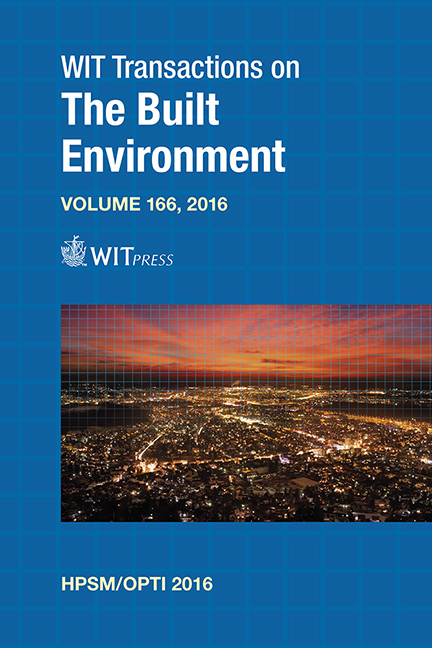A Numerical Model Of A Prestressed Concrete Girder
Price
Free (open access)
Transaction
Volume
166
Pages
13
Page Range
115 - 127
Published
2017
Size
2,015 kb
Paper DOI
10.2495/HPSM160111
Copyright
WIT Press
Author(s)
M. Galić, P. Marović, I. Ravlić
Abstract
The paper briefly describes a three-dimensional (3D) numerical model for describing non-linear behaviour of prestressed concrete structures. A computational analysis of reinforced and prestressed concrete structures requires a realistic material model and an accurate description of the geometry of reinforcement, prestressed tendons and concrete in order to predict their behaviour and evaluate the safety levels of the design. The definition of this kind of model requires a good mathematical formulation and numerical interpretation, which is shown in this paper. The non-linear behaviour of concrete is described by an elasto-plastic material model based on the modified Mohr-Coulomb law for dominant compression stresses and the modified Rankine law for dominant tensile stresses. A multi-surface presentation of the model is implemented, thus permitting a rapid convergence of the mathematical procedure. The model accounts for the triaxial, non-linear behaviour of concrete and includes all dominant effects on concrete such as yielding in compression, cracking in tension, softening and hardening. The model is defined by elementary material parameters (Young’s modulus, Poisson’s coefficient, maximal uniaxial tensile and compression stresses, coefficient of tensile correction, maximal tensile and maximal compression strains). The non-linear behaviour of prestressed tendons is described by a one-dimensional (1D) elasto-viscoplastic model. The tendon element geometry is described by a second order space function which is determined by its projections. These elements allow the modelling of arbitrarily curved prestressing tendons in space, thus they can be determined independently of a 3D finite element concrete mesh. This is particularly important for the space curvature of prestressed tendons. Some possibilities of the model are illustrated by a practical example and the obtained results are compared with the known numerical and experimental ones.
Keywords
numerical modelling, prestressed concrete structures, prestressed tendon, non-linear behaviour, reinforcement





